The LK Lander holds a special place in the Soviet Crewed Lunar Programs, not least because it was the only major item of hardware to be flight rated.
Initial designs had major differences from the final version. More specifically, two different systems for the legs were considered, and rejected.
Crushable Torus Design.
One rejected version would rely on a crushable torus base, similar to what was used for the “Venera” Venus landers.
I’m not sure exactly why this was rejected. Perhaps weight?
Self-adjusting legs
The other is more ingenious though. It proposed a system of cables linking the legs, which would be vertical. The idea was that the legs would automatically adjust, so that the lander would be perfectly vertical, even if the terrain was uneven. There was some scepticism from senior engineers, so a demonstration version was built, to show how the concept would work in practice.
There are a few things worth noting in the concept sketch. The cabin and docking system, (on the top), are starting to come together. Also the front with the windows is looking a lot like the early mock-ups, with the “slice” out of the front, and an upper docking window. The main antenna is distinctly over-sized.
Despite a satisfactory demo, it was rejected in favour of a version with 4 extended legs.
This is the design that was taken forward:
Some interesting numbers in that table - the Apollo LEM typically landed at about 1 metre/sec, but the LK was designed to cope with more. Note also the presence of a reserve engine, something the Apollo LM lacked. But it is a LOT smaller, and had a VERY short flight time before the cosmonaut had to land.
The biggest difference between this version, and the final version, (apart from a lack of detail), is the shape of the forward window section, which evolved into a hollow bowl, rather than the sharp angles shown here.
Test Version.
The test version did not look much like the flight version, apart from the legs. It was swung down on cables, to simulate Lunar gravity, onto a fake cratered surface.
They didn’t muck about when testing the landing. It was thrown at the ground at some crazy angles, as shown in these video stills:
The two photos above show another feature of the LK that was missing on the Apollo LM: The “Hold down jets” mounted on the legs. There was still considerable uncertainty about the lunar surface, and something to plant the lander firmly down was considered a good idea. As testing progressed, the jets became more vertical.
There is much more to be told on the development of the LK, including how it was tested with cosmonauts in parabolic flights, the T1K test program, (cancelled), and the T2K test program, that finally saw it flight rated. But those tales are for another time.
This edition’s cool link:
Ok, it’s my publication, so I’m going to link to my own Gum Road page, where you can buy my reference renders of the Soviet N-1 Moon rocket, all 4 flown variants!
https://starbase1.gumroad.com/l/N1-Reference
With an impressive set of twenty 5* ratings!
This editions cool image:
RLA Rocket Family. (With some context)
The RLA “Podyem” / “Rise” Rocket family was proposed by Glushko, in October 1974, after the N1 was cancelled. It did not last long, but the timing and details suggest it evolved into the “Vulkan” project, before that too was cancelled.
The RLA family was to consist mainly of three rockets: RLA-120, capable of launching 30 to 35 tons of payload into low reference orbit (LEO), RLA-135, capable of launching 100 tons and a space shuttle, and RLA-150 or "Volcano", with a carrying capacity of 170 to 250 tons to LEO.
RLA-120 would be a two-stage rocket weighing 980 tons at the start. A height of 78.7 metres and a diameter of 6 metres. For the first stage, a four-chamber RD-150 engine running on kerosene was planned. It was supposed to work in conjunction with two RD-124B engines. The RD-125A engine was to be installed at the second stage.
The complex of spaceplanes using RLA-130 and RLA-135 was named MTKS-1 (Reusable Space Transport System-1). MTKS-1 had a launch weight of 2786 tons, of which 152 tons were assigned to the shuttle. The shuttle itself could launch from 40 to 20 tons into low orbit, and its crew would be between three and nine people .
The project remained on paper only.
That’s all folks!








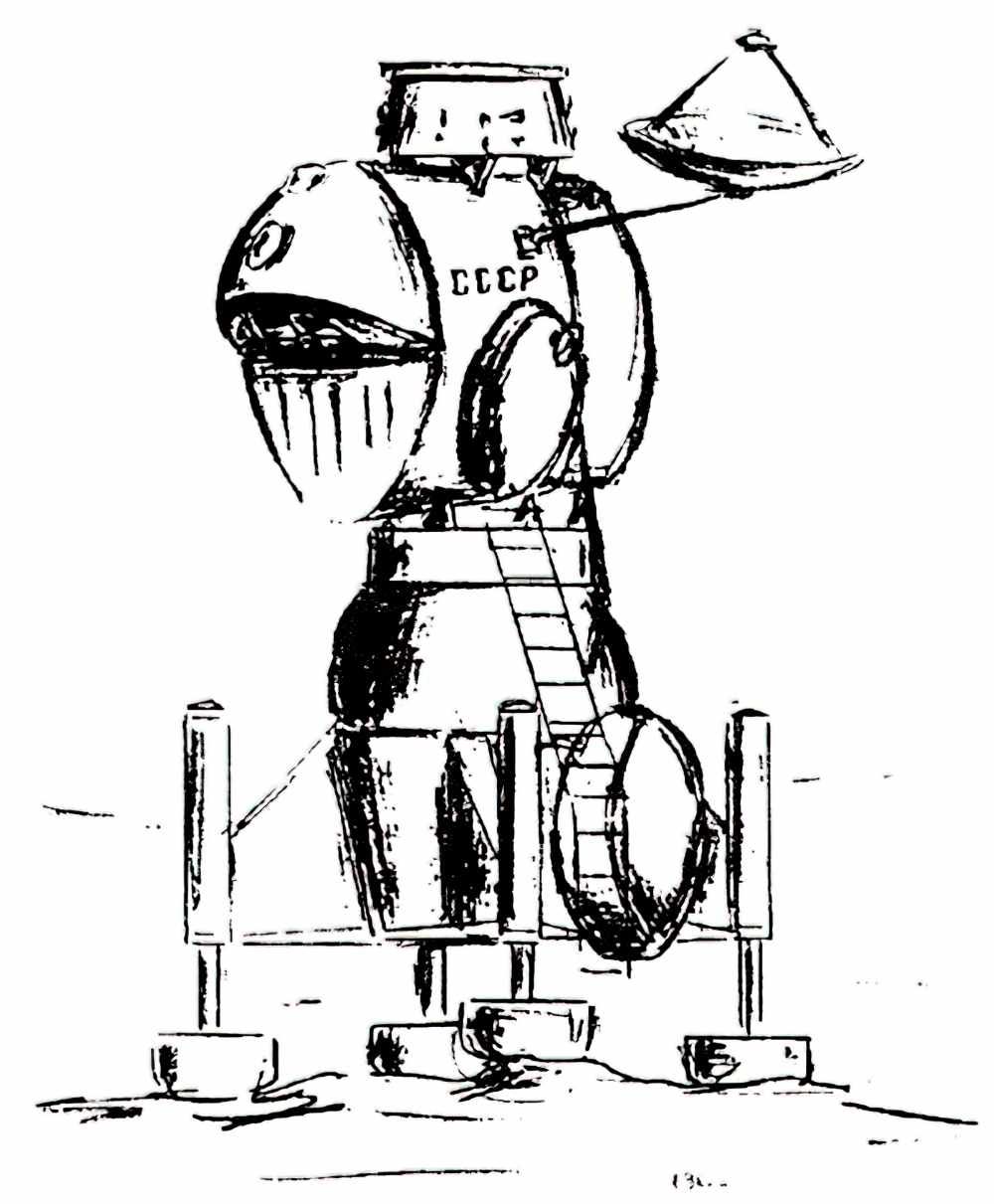
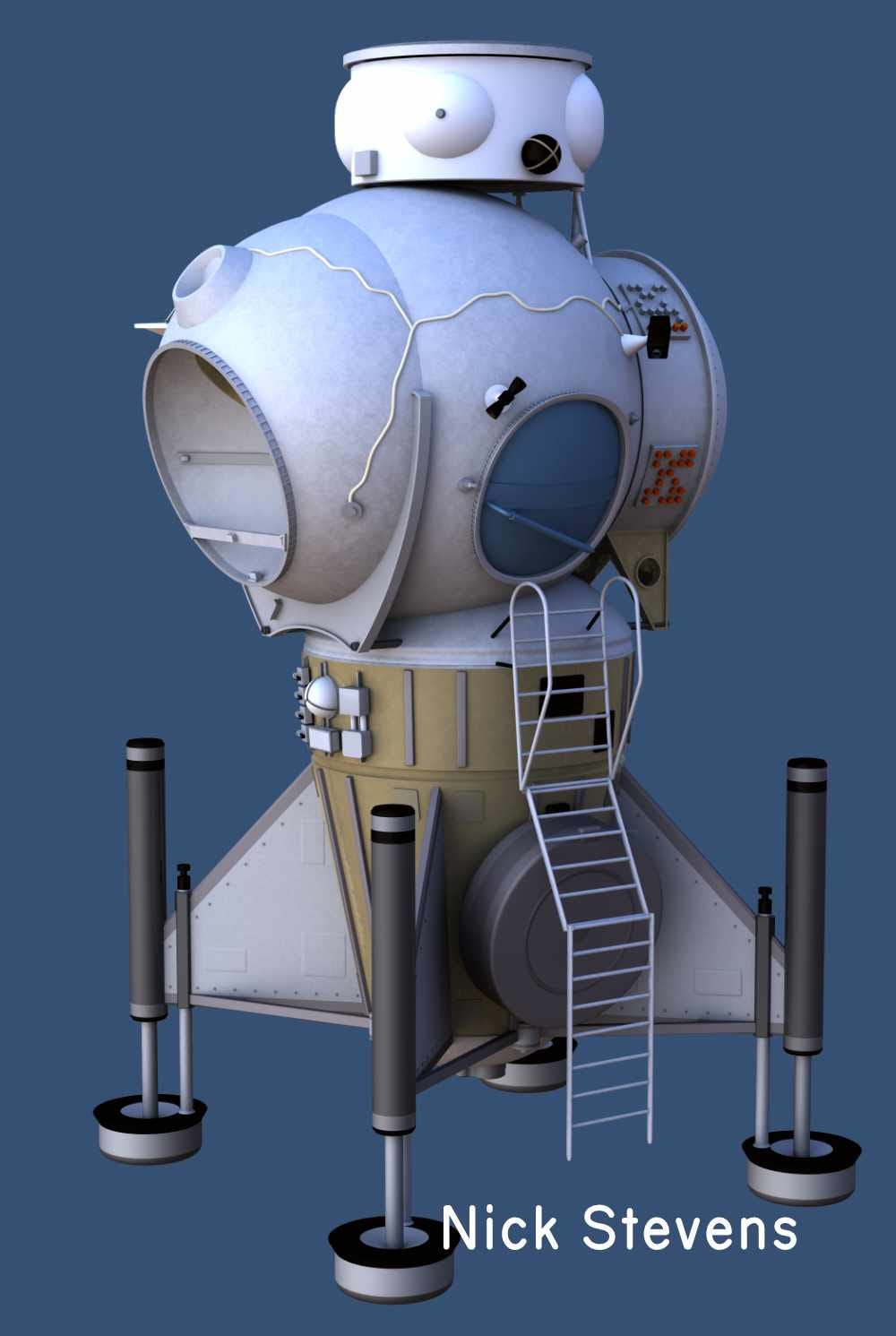
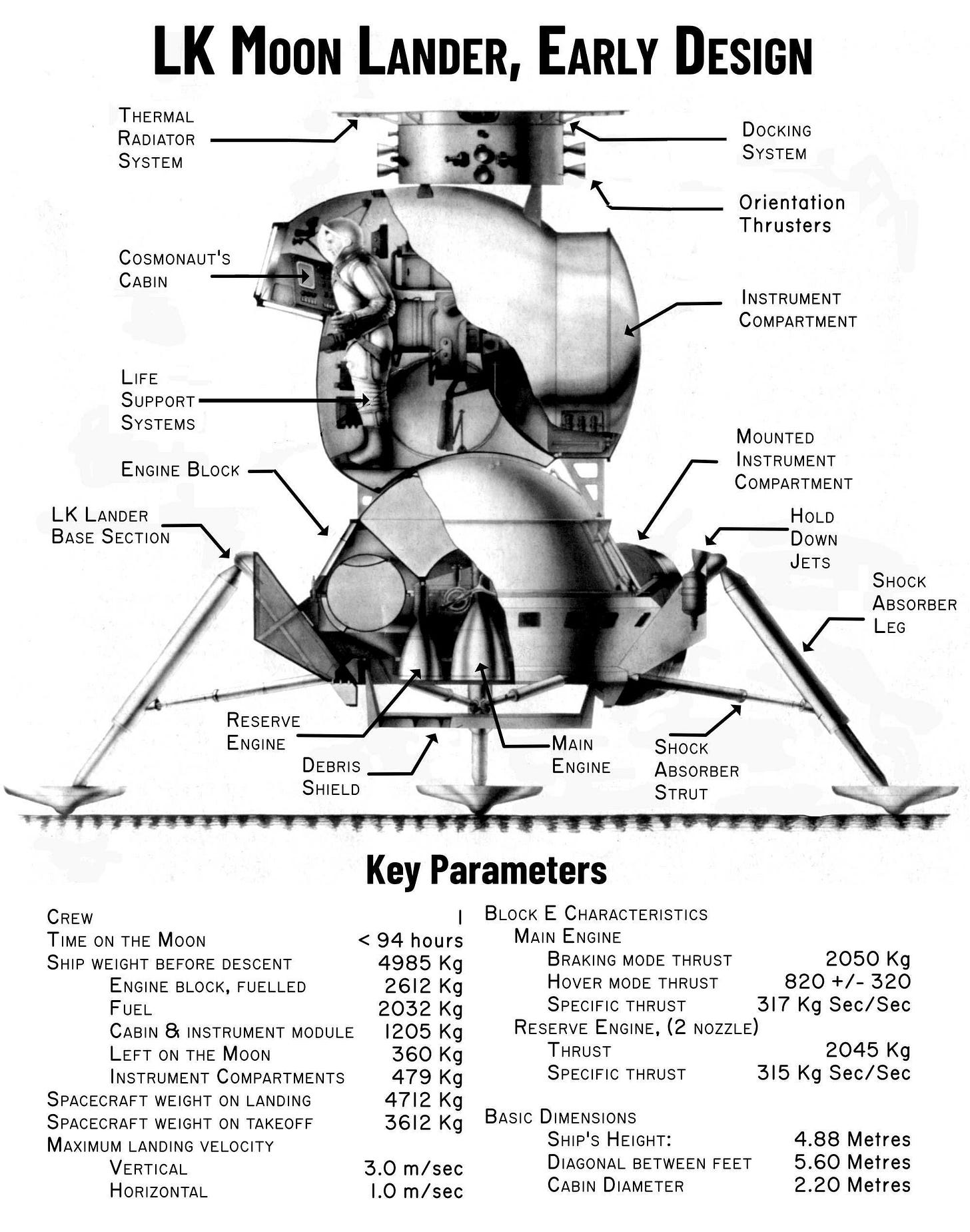
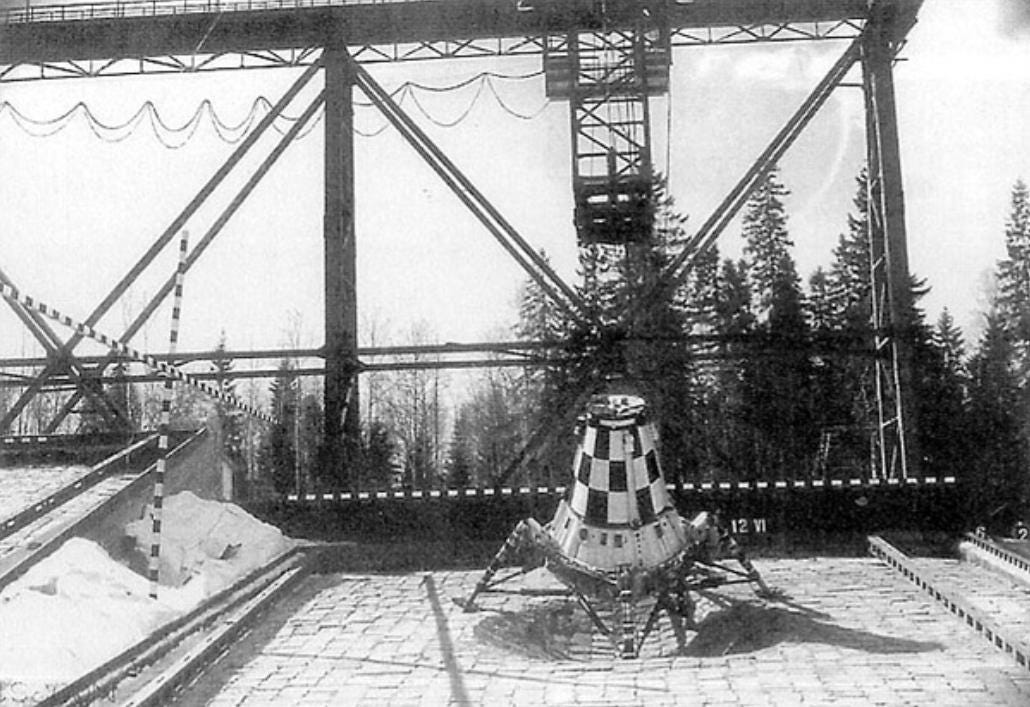
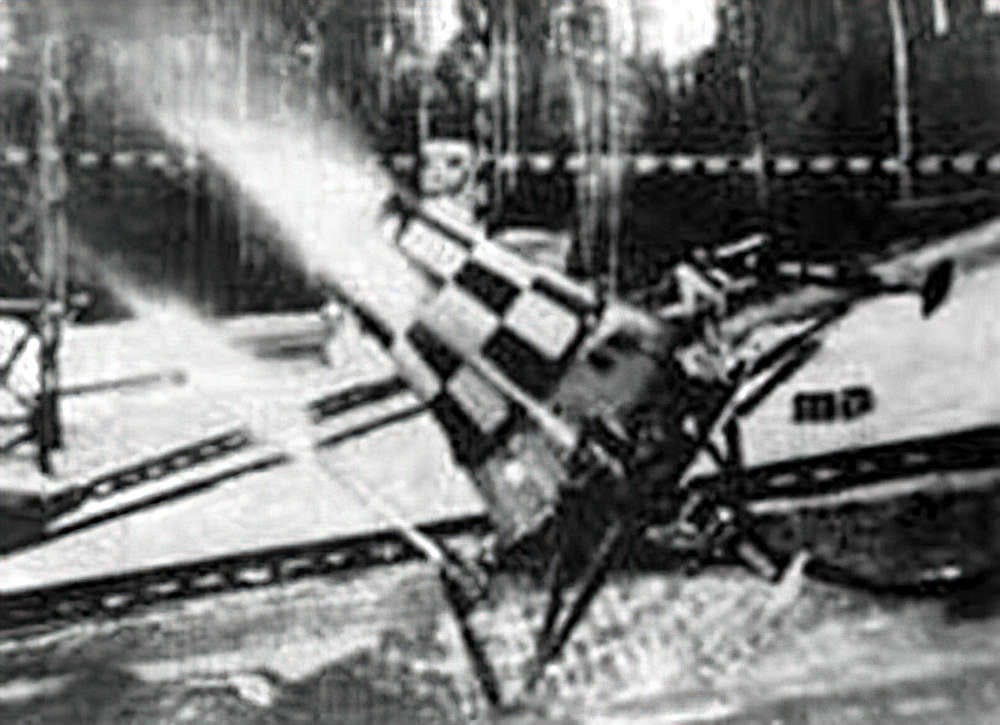
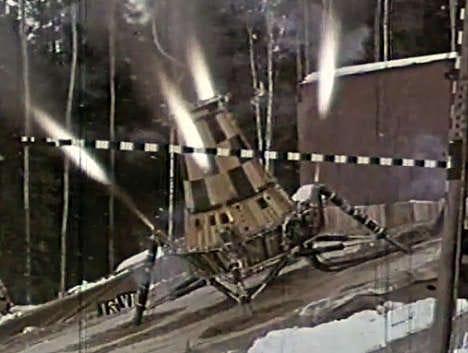
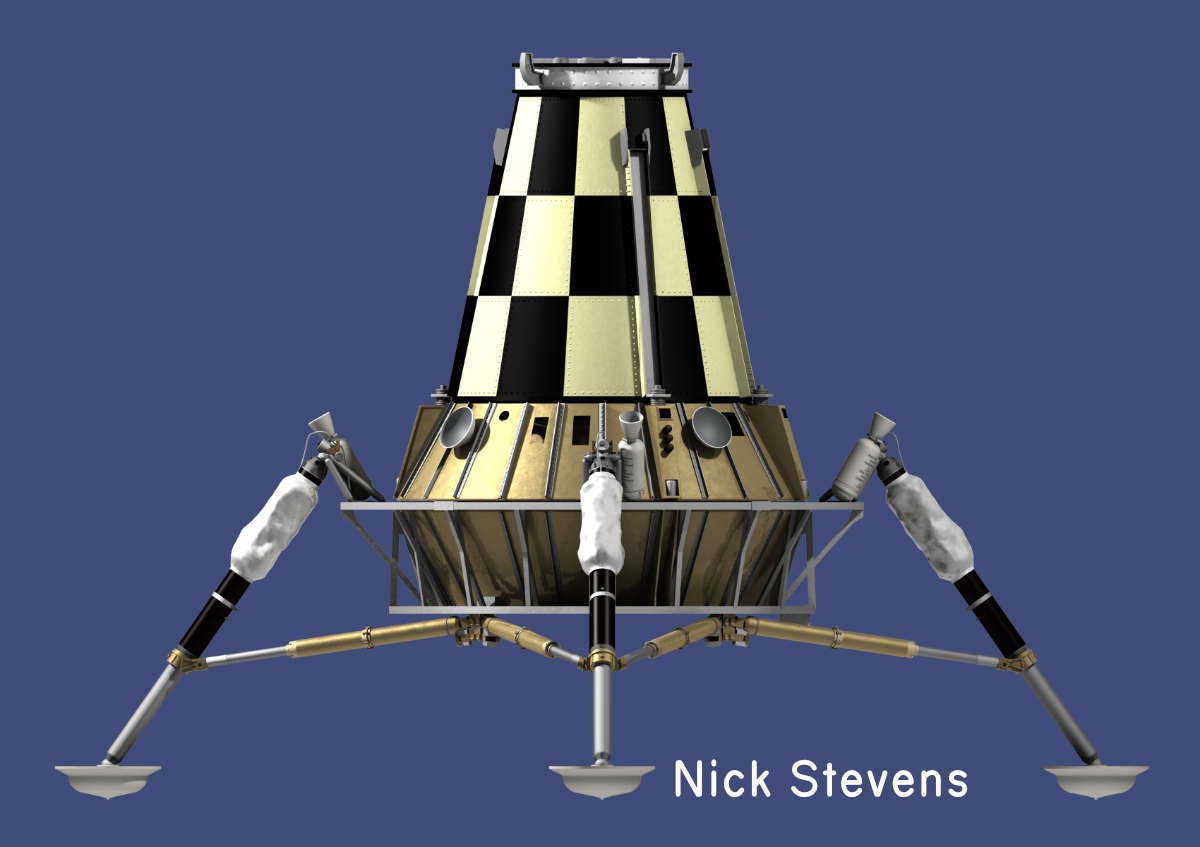
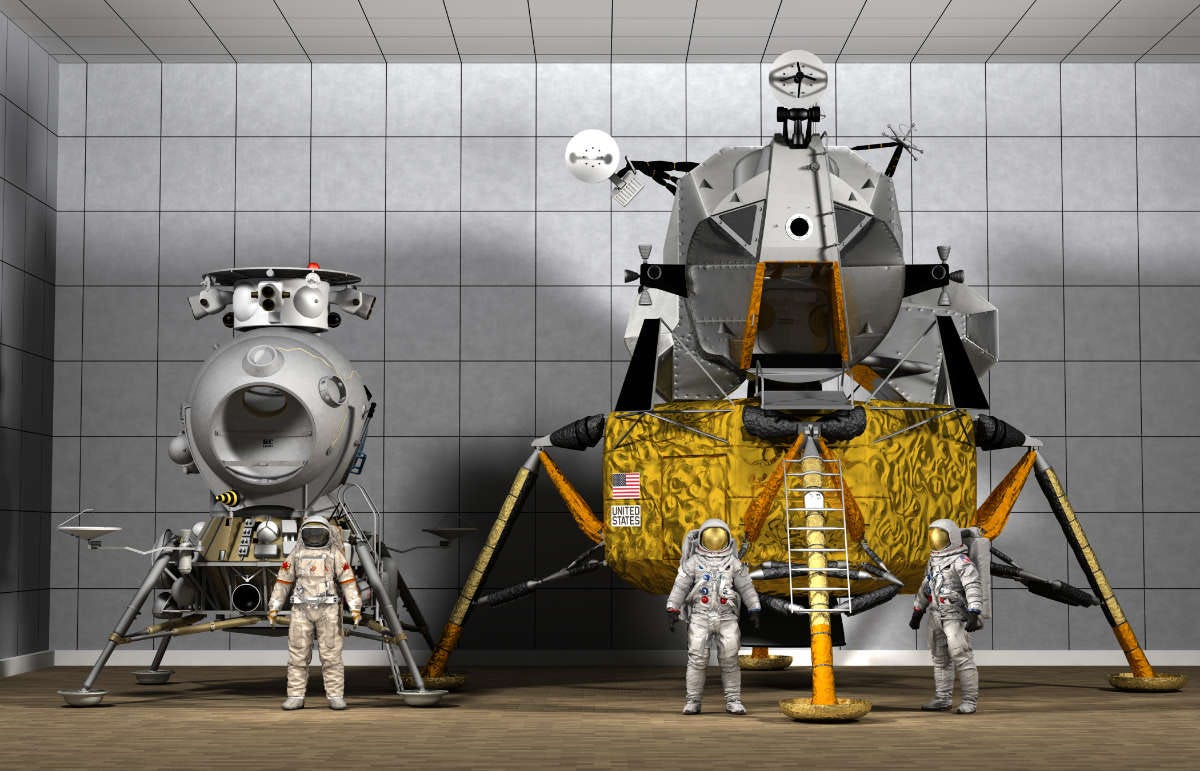
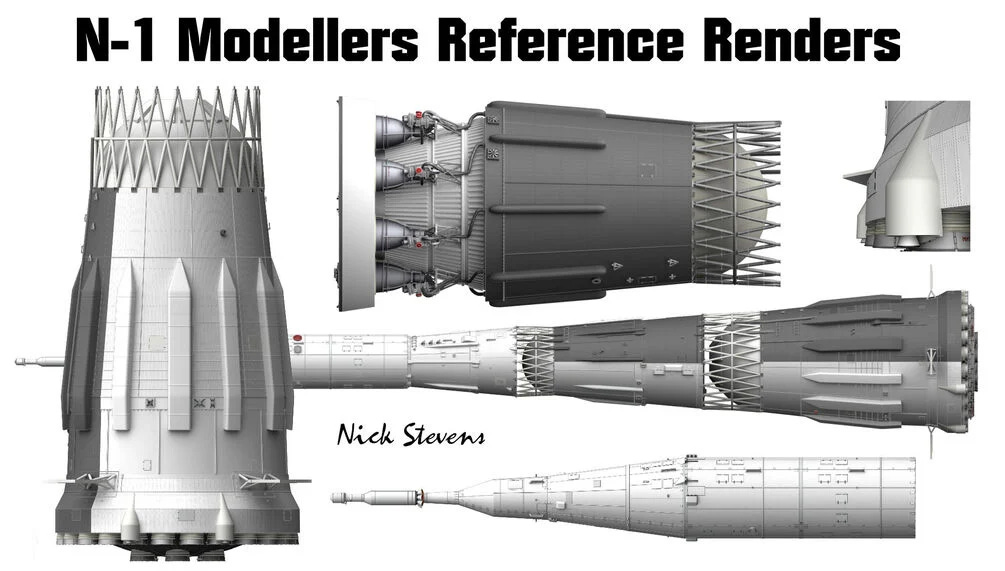
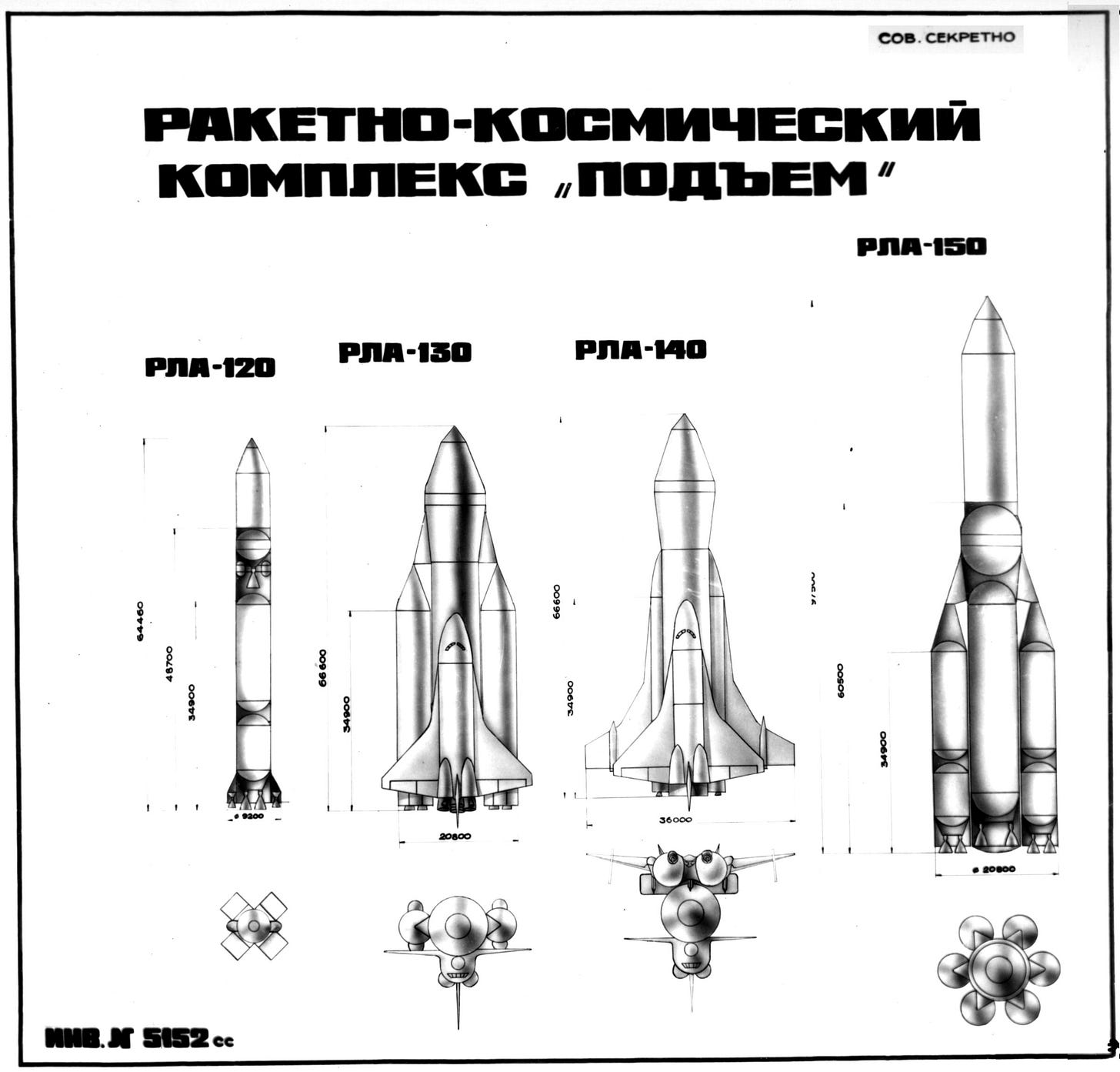

Nice retrospective of the early Soviet lunar lander designs. I’ve always been fascinated by the U.S. Apollo LM design evolution. I’ve never seen the early Soviet counterparts.
Equally fascinating is the size comparison between the LK and the LM. Not only did they choose different crew sizes, but it would seem that there were two entirely different purposes to each mission. It’s hard to imagine that the Soviets intended to perform much science .... at least on a “first landing” mission. Whereas, the U.S. brought everything but the kitchen sink ... including a car!
Do you know of any follow-on LK designs that might have been capable of supporting more crew/equipment, or longer duration lunar stays ... for instance, together with a lunar base?
Any details on how the self adjusting leg system was supposed to work?